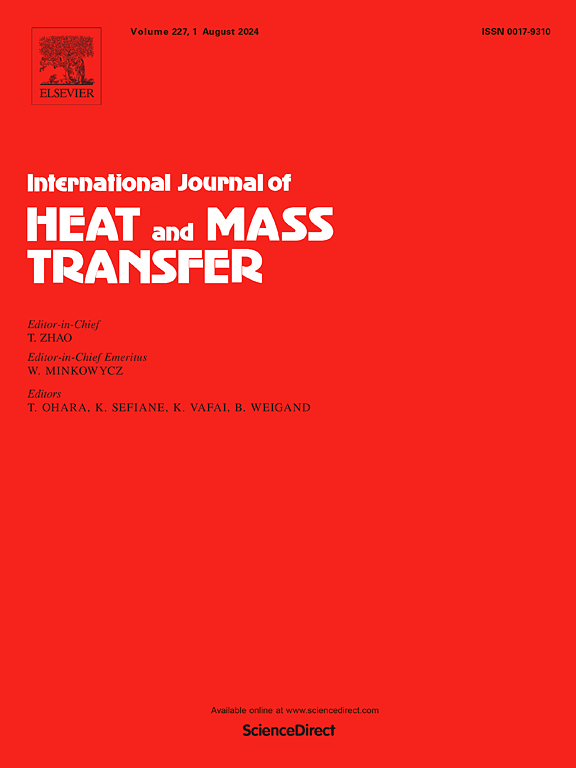Unified gas radiation model over the entire temperature range based on WSGG
IF 5
2区 工程技术
Q1 ENGINEERING, MECHANICAL
International Journal of Heat and Mass Transfer
Pub Date : 2025-01-25
DOI:10.1016/j.ijheatmasstransfer.2025.126713
引用次数: 0
Abstract
A unified gas radiation model over the entire temperature range — the Unified model based on the Weighted-Sum-of-Gray-Gases (UWSGG) is proposed, which improves the accuracy of the standard WSGG model. The pressure absorption coefficient and the weighting factor are approximated with quadratic polynomial functions of the temperature . For gray gases and , are determined by translation from and by translation and multiplicative factors from . An efficient inverse method and a Genetic Algorithm are used to find all the model parameters from the total radiative heat source computed with the Line-by-Line (LBL) method based on HITEMP2010 data. It can be noted that depend highly on and the depend weakly on whereas in the standard WSGG model, are usually constants and depend highly on . It is shown, on 92 selected 1D cases of CO-HO mixtures (at atmospheric pressure with a mole fraction ratio of 2) within the temperature range [300 K; 3,000 K], that the maximum relative errors on for the UWSGG model with do not exceed 7.5 %. Conversely, for the standard WSGG model by Dorigon et al. (2013) on the first 72 cases ( 2500 K in the other cases and the model by Dorigon is limited to 2500 K), these errors vary up to 20.4 % (seven cases have errors higher than 15.0 %, fourteen cases have errors between 10.0 % and 15.0 % and, five cases have errors between 7.5 % and 10.0 %). The accuracy of the total radiative heat flux is also improved with the UWSGG model.
求助全文
约1分钟内获得全文
求助全文
来源期刊
CiteScore
10.30
自引率
13.50%
发文量
1319
审稿时长
41 days
期刊介绍:
International Journal of Heat and Mass Transfer is the vehicle for the exchange of basic ideas in heat and mass transfer between research workers and engineers throughout the world. It focuses on both analytical and experimental research, with an emphasis on contributions which increase the basic understanding of transfer processes and their application to engineering problems.
Topics include:
-New methods of measuring and/or correlating transport-property data
-Energy engineering
-Environmental applications of heat and/or mass transfer

 求助内容:
求助内容: 应助结果提醒方式:
应助结果提醒方式:


